-
 Bitcoin
Bitcoin $115500
-2.35% -
 Ethereum
Ethereum $3670
-4.50% -
 XRP
XRP $2.992
-4.11% -
 Tether USDt
Tether USDt $1.000
0.03% -
 BNB
BNB $783.4
-1.55% -
 Solana
Solana $170.6
-4.87% -
 USDC
USDC $1.000
0.04% -
 Dogecoin
Dogecoin $0.2079
-6.57% -
 TRON
TRON $0.3248
-0.70% -
 Cardano
Cardano $0.7321
-4.97% -
 Hyperliquid
Hyperliquid $40.87
-3.50% -
 Stellar
Stellar $0.3957
-3.79% -
 Sui
Sui $3.574
-5.75% -
 Chainlink
Chainlink $16.75
-5.94% -
 Bitcoin Cash
Bitcoin Cash $559.3
-5.93% -
 Hedera
Hedera $0.2475
-4.43% -
 Avalanche
Avalanche $22.21
-5.25% -
 Ethena USDe
Ethena USDe $1.001
-0.03% -
 Toncoin
Toncoin $3.507
1.86% -
 UNUS SED LEO
UNUS SED LEO $8.941
-0.23% -
 Litecoin
Litecoin $105.7
-5.30% -
 Shiba Inu
Shiba Inu $0.00001233
-4.89% -
 Polkadot
Polkadot $3.650
-4.89% -
 Uniswap
Uniswap $9.286
-8.51% -
 Monero
Monero $305.9
-1.24% -
 Dai
Dai $0.9999
-0.02% -
 Bitget Token
Bitget Token $4.375
-3.78% -
 Cronos
Cronos $0.1391
-6.19% -
 Pepe
Pepe $0.00001069
-6.43% -
 Aave
Aave $258.9
-6.49%
What does a TRIX value of 0 signify?
A TRIX value of 0 indicates neutral momentum, signaling neither bullish nor bearish pressure, often occurring during consolidation or trend pauses in crypto markets.
Jul 31, 2025 at 02:21 pm
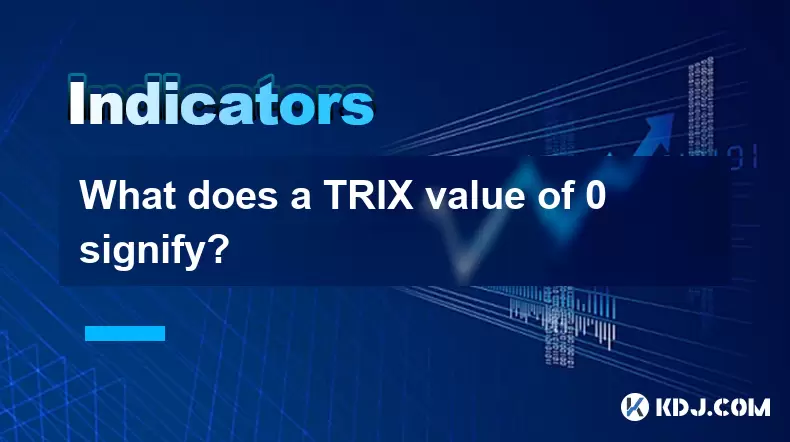
Understanding the TRIX Indicator in Cryptocurrency Trading
The TRIX (Triple Exponential Average) indicator is a momentum oscillator used in technical analysis to identify oversold and overbought conditions, as well as potential trend reversals in cryptocurrency price movements. It is derived by applying a triple exponential smoothing to the price data, which helps filter out minor price fluctuations and highlights the underlying trend. The resulting oscillator oscillates around a zero line, and its values provide insights into the strength and direction of momentum. When the TRIX value is 0, it indicates a specific state in the momentum of the asset being analyzed.
The calculation of TRIX involves taking the percentage rate of change of a triple-smoothed exponential moving average (EMA). Because of the triple smoothing, short-term noise is significantly reduced, making TRIX particularly effective in identifying long-term trends and divergences. The formula typically looks like this:
- First, compute a 14-period EMA of the closing price.
- Then, compute a second EMA of the first EMA.
- After that, calculate a third EMA of the second EMA.
- Finally, the TRIX line is the 1-period percent change of the third EMA.
When the outcome of this calculation results in a TRIX value of 0, it means that the rate of change between the current and previous triple-smoothed EMA values is zero. This suggests that, at that moment, there is no momentum acceleration or deceleration detected by the indicator.
What a TRIX Value of 0 Indicates About Market Momentum
A TRIX value of 0 is not a signal of trend direction but rather a signal of momentum equilibrium. It reflects a point where the momentum of the cryptocurrency’s price has neither increased nor decreased over the most recent period. In practical terms, this often occurs when the price enters a consolidation phase or when the rate of price change stabilizes after a strong move.
- The TRIX line crossing the zero line is often interpreted as a potential trend change.
- When TRIX moves from negative to positive and crosses above zero, it may suggest increasing bullish momentum.
- Conversely, when TRIX moves from positive to negative and crosses below zero, it may indicate growing bearish momentum.
- However, when the TRIX value is exactly 0, it sits precisely at this threshold, indicating a neutral state.
This neutrality does not imply that the price is stagnant, but rather that the smoothed rate of change is not currently expanding or contracting. Traders should not interpret a TRIX value of 0 as a standalone buy or sell signal. Instead, it should be evaluated in conjunction with other indicators and price action patterns.
How to Interpret a TRIX Value of 0 in Real-Time Charts
In live cryptocurrency trading platforms such as TradingView, MetaTrader, or Binance’s advanced charting tools, the TRIX indicator is often plotted as a single line oscillating above and below the zero line. Observing a TRIX value of 0 requires attention to the following steps:
- Open the chart of the desired cryptocurrency (e.g., BTC/USDT).
- Apply the TRIX indicator from the studies or indicators menu.
- Adjust the period (commonly set to 14 or 15) to suit the trading timeframe.
- Observe the TRIX line as it approaches, touches, or crosses the zero level.
When the TRIX line reaches exactly 0, it means the current triple-smoothed EMA is equal to the previous period’s value. This can happen during sideways markets or at the end of a trend when momentum is fading. It may also occur during a temporary pause in a strong trend before continuation.
Traders can use this moment to assess whether the market is likely to resume its prior trend or reverse. For instance, if the price has been rising and TRIX hits 0, it could signal weakening upward momentum. Conversely, after a downtrend, a TRIX value of 0 might suggest that selling pressure is subsiding.
Using TRIX Crossovers and Divergences Alongside a Zero Reading
While a TRIX value of 0 is significant, its real utility emerges when combined with crossovers and divergence analysis.
- A bullish crossover occurs when the TRIX line crosses above the signal line (a moving average of TRIX) from below, especially if it happens near or after a 0 reading.
- A bearish crossover happens when TRIX crosses below the signal line, particularly when descending through the zero line.
- Bullish divergence is formed when the price makes a lower low, but TRIX makes a higher low and crosses above 0, suggesting weakening bearish momentum.
- Bearish divergence appears when the price makes a higher high, but TRIX makes a lower high and crosses below 0, indicating fading bullish strength.
These patterns gain more credibility when the TRIX line interacts with the zero level, as it confirms a shift in momentum direction. For example, if TRIX rises from negative territory, reaches 0, and continues into positive values, it reinforces the idea of strengthening upward momentum.
Practical Example: TRIX at 0 in Bitcoin Trading
Consider a scenario on the BTC/USDT 4-hour chart where Bitcoin has been in a downtrend. The TRIX line has been negative, reflecting consistent downward momentum. Over several candles, the decline slows, and the TRIX line begins to rise toward 0. When it finally reaches 0, it indicates that the rate of decline in the triple-smoothed average has stopped.
At this point, traders might look for confirmation:
- Has volume decreased during the recent price drops?
- Is the price forming higher lows on the chart?
- Has the Relative Strength Index (RSI) moved above 30, indicating potential oversold conditions?
If these conditions align, the TRIX value of 0 could mark the beginning of a reversal. Conversely, if the price breaks to a new low while TRIX remains at or below 0, the downtrend may persist.
Common Misinterpretations of a TRIX Value of 0
A frequent misunderstanding is assuming that a TRIX value of 0 means the price is flat. This is incorrect. The price can still be moving up or down; TRIX only measures the rate of change of the smoothed trend. Another misconception is treating a 0 reading as a direct entry signal. In reality, it is a transitional phase requiring confirmation.
Some traders mistakenly believe that TRIX is a leading indicator. However, due to its triple smoothing, it tends to lag, especially in fast-moving crypto markets. Therefore, relying solely on a 0 reading without additional context can lead to false signals.
FAQs
What is the difference between TRIX being at 0 and crossing the zero line?
A TRIX value of 0 means the current momentum rate of change is neutral. Crossing the zero line refers to the transition from positive to negative (bearish) or negative to positive (bullish), which carries more directional significance.
Can TRIX stay at 0 for multiple periods?
Yes, especially during prolonged consolidation phases. If the triple-smoothed EMA remains stable over several periods, TRIX will remain near or at 0 until momentum resumes.
Does a TRIX value of 0 always precede a trend reversal?
No. It may indicate a pause within a trend rather than a reversal. Confirmation from price action, volume, or other indicators is essential.
Is TRIX more reliable on higher timeframes in cryptocurrency trading?
Generally, yes. On higher timeframes like daily or weekly charts, TRIX is less affected by market noise, making zero-line interactions and crossovers more reliable than on lower timeframes like 5-minute charts.
Disclaimer:info@kdj.com
The information provided is not trading advice. kdj.com does not assume any responsibility for any investments made based on the information provided in this article. Cryptocurrencies are highly volatile and it is highly recommended that you invest with caution after thorough research!
If you believe that the content used on this website infringes your copyright, please contact us immediately (info@kdj.com) and we will delete it promptly.
- Ripple, XRP, and RLUSD: Navigating Growth and Innovation
- 2025-08-01 08:30:37
- JPMorgan, Ripple, and Blockchain Payments: A New York Minute on Institutional Adoption
- 2025-08-01 08:30:37
- Coinbase, Ethereum, and Science Token: A New Era for Crypto?
- 2025-08-01 06:50:12
- Byzantine Coin Pendant: Elite Evidence Shines New Light on Early Medieval Essex
- 2025-08-01 07:10:55
- From Homeless to Homeowner: A Ring, a Good Deed, and a Life Transformed
- 2025-08-01 06:50:12
- Bitcoin's Lazarus Wallets: Dormant Movement Awakens!
- 2025-08-01 06:32:41
Related knowledge
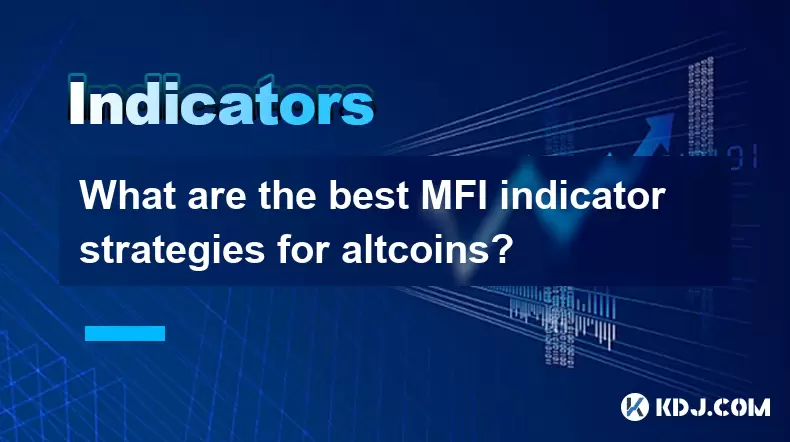
What are the best MFI indicator strategies for altcoins?
Aug 01,2025 at 08:01am
Understanding the MFI Indicator in Altcoin TradingThe Money Flow Index (MFI) is a momentum oscillator that measures the flow of money into or out of a...
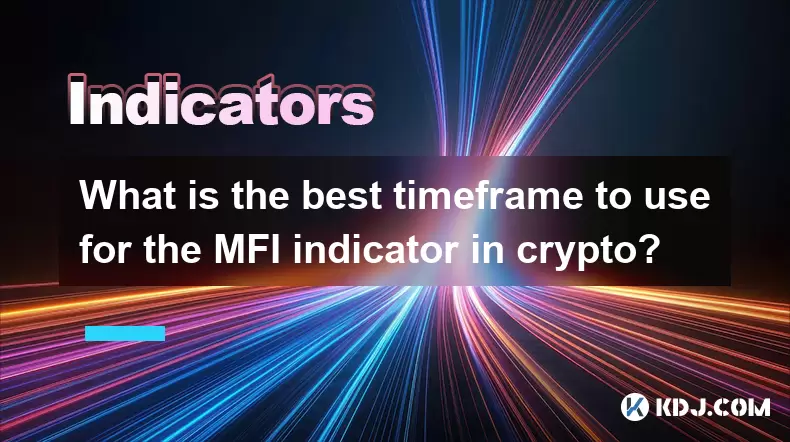
What is the best timeframe to use for the MFI indicator in crypto?
Aug 01,2025 at 09:02am
Understanding the MFI Indicator in Cryptocurrency TradingThe Money Flow Index (MFI) is a momentum oscillator that measures the flow of money into and ...
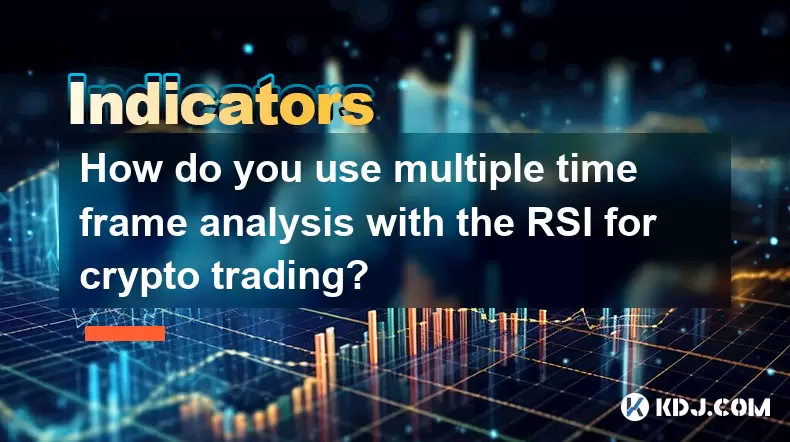
How do you use multiple time frame analysis with the RSI for crypto trading?
Aug 01,2025 at 05:19am
Understanding the Role of RSI in Crypto TradingThe Relative Strength Index (RSI) is a momentum oscillator that measures the speed and change of price ...
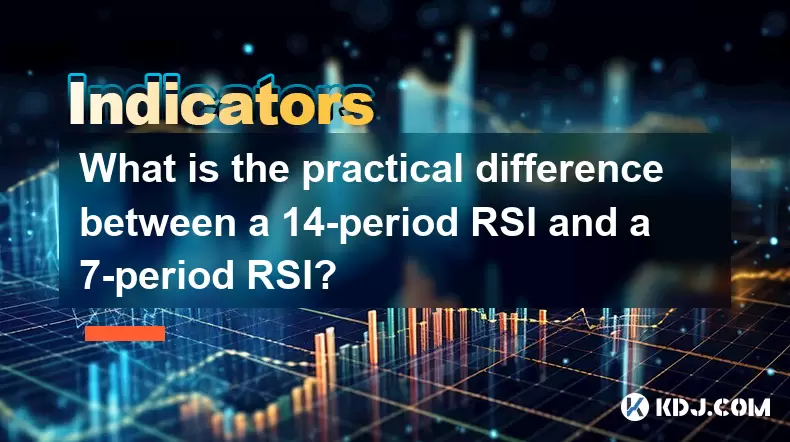
What is the practical difference between a 14-period RSI and a 7-period RSI?
Aug 01,2025 at 07:01am
Understanding the Relative Strength Index (RSI)The Relative Strength Index (RSI) is a momentum oscillator widely used in cryptocurrency trading to mea...
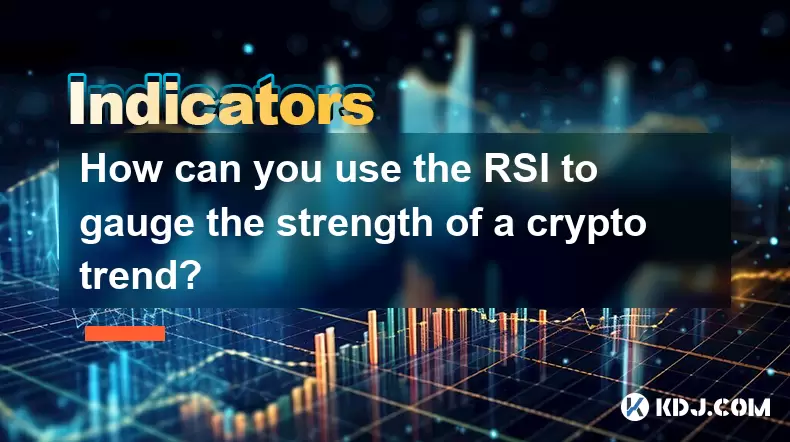
How can you use the RSI to gauge the strength of a crypto trend?
Aug 01,2025 at 08:35am
Understanding the RSI and Its Role in Crypto AnalysisThe Relative Strength Index (RSI) is a momentum oscillator that measures the speed and change of ...
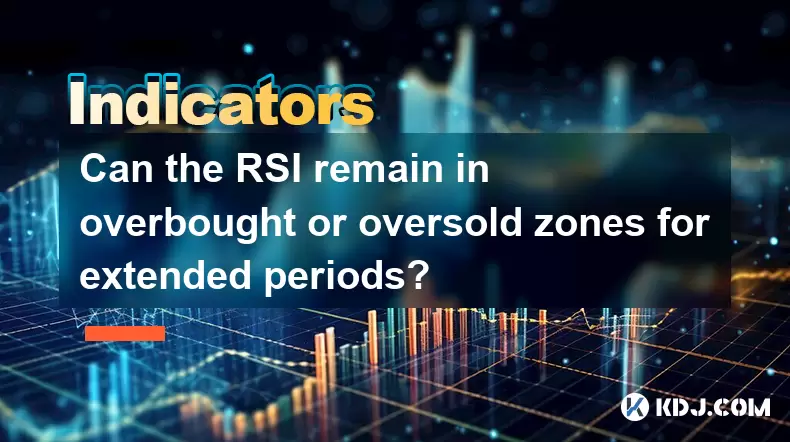
Can the RSI remain in overbought or oversold zones for extended periods?
Aug 01,2025 at 07:10am
Understanding the RSI and Its Standard InterpretationThe Relative Strength Index (RSI) is a momentum oscillator that measures the speed and change of ...

What are the best MFI indicator strategies for altcoins?
Aug 01,2025 at 08:01am
Understanding the MFI Indicator in Altcoin TradingThe Money Flow Index (MFI) is a momentum oscillator that measures the flow of money into or out of a...

What is the best timeframe to use for the MFI indicator in crypto?
Aug 01,2025 at 09:02am
Understanding the MFI Indicator in Cryptocurrency TradingThe Money Flow Index (MFI) is a momentum oscillator that measures the flow of money into and ...

How do you use multiple time frame analysis with the RSI for crypto trading?
Aug 01,2025 at 05:19am
Understanding the Role of RSI in Crypto TradingThe Relative Strength Index (RSI) is a momentum oscillator that measures the speed and change of price ...

What is the practical difference between a 14-period RSI and a 7-period RSI?
Aug 01,2025 at 07:01am
Understanding the Relative Strength Index (RSI)The Relative Strength Index (RSI) is a momentum oscillator widely used in cryptocurrency trading to mea...

How can you use the RSI to gauge the strength of a crypto trend?
Aug 01,2025 at 08:35am
Understanding the RSI and Its Role in Crypto AnalysisThe Relative Strength Index (RSI) is a momentum oscillator that measures the speed and change of ...

Can the RSI remain in overbought or oversold zones for extended periods?
Aug 01,2025 at 07:10am
Understanding the RSI and Its Standard InterpretationThe Relative Strength Index (RSI) is a momentum oscillator that measures the speed and change of ...
See all articles

























































































